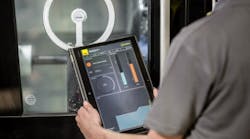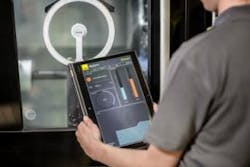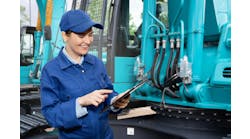Smart Industry: How do you define sensor-equipped tooling?
Göran: In short, we define sensor-equipped tooling as all cutting tools and tool holders with embedded electronics adding functionality to said tool. That includes various kinds of sensors, processors, energy sources and wired or wireless communication protocols.
Theoretically, there is no cutting tool that cannot be equipped with sensors. However, the smaller the tool is, the more challenging it gets to make this work. Here, the number of sensors plays a role as well. The number of sensor communicating simultaneously are a critical factor, but very much needed for multi-sensing analytics.
Smart Industry: What challenges arise when adding smart tooling to a manufacturing platform?
Göran: Very often the lack of a standard interface or API to communicate machine data bi-directionally at a high bandwidth and higher frequencies is a challenge. Other areas posing potential difficulties are most often connectivity, efficiency, security and data integrity transfer.Smart Industry: What’s on the horizon of tooling that most excites you?
Göran: It’s not so much a specific tool that’s exciting and fascinating, it’s more the sum of possibilities this technology can ultimately offer to customers. The potential for process security and reliability, efficient resource utilization, close-loop process automation, just to name a few. But there are other aspects that come to mind, like low threshold plug-and-play manufacturing with embedded knowledge in machines, systems and tools. I believe that, once fully utilized, this technology offers efficiencies we have not seen in industry in a very long time.





